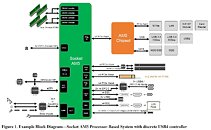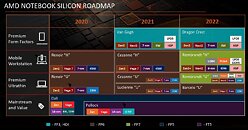SolidRun Unveils Ryzen V3000 CX7 Com Module
SolidRun, a leading developer and manufacturer of high-performance System on Module (SOM) solutions, Single Board Computers (SBC) and network edge solutions, today announced the launch of its new Ryzen V3000 CX7 Com module, configurable with the 8-core/16-thread Ryzen Embedded V3C48 Processor. Boasting AMD's state-of-the-art 6 nm "Zen 3" architecture, this ultra-powerful embedded solution offers industry-leading performance and power efficiency. As SolidRun's first x86-based Com Express 7 module, the Ryzen V3000 CX7 Com module ushers in a new era of efficient, high-performance computing for a diverse range of networking and edge applications.
"Our new Ryzen V3000 CX7 Com module is an exciting addition to our CX7 product line as it represents a significant leap forward in embedded computing and offers unmatched performance and scalability for networking and edge applications," said Dr. Atai Ziv, CEO at SolidRun. "By leveraging the power of AMD's Ryzen Embedded V3000 processor, we are empowering developers to create innovative solutions that meet the evolving demands of modern embedded computing."
"Our new Ryzen V3000 CX7 Com module is an exciting addition to our CX7 product line as it represents a significant leap forward in embedded computing and offers unmatched performance and scalability for networking and edge applications," said Dr. Atai Ziv, CEO at SolidRun. "By leveraging the power of AMD's Ryzen Embedded V3000 processor, we are empowering developers to create innovative solutions that meet the evolving demands of modern embedded computing."























































